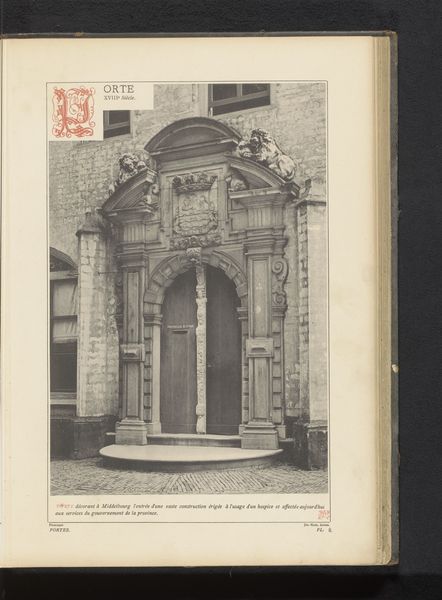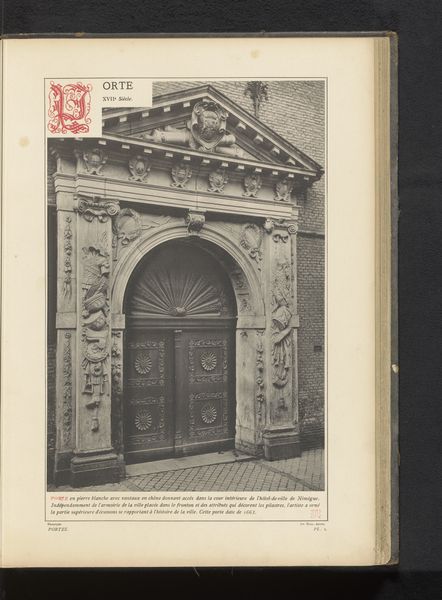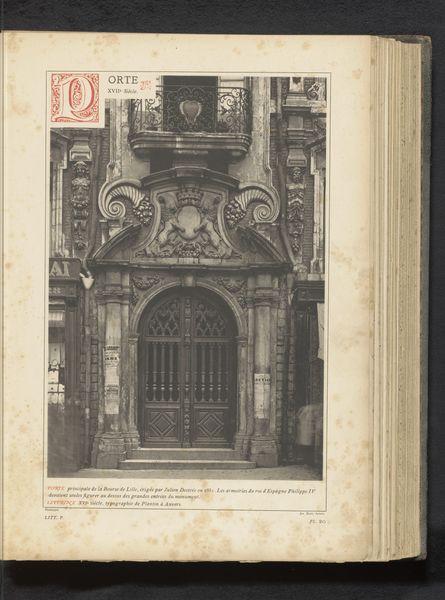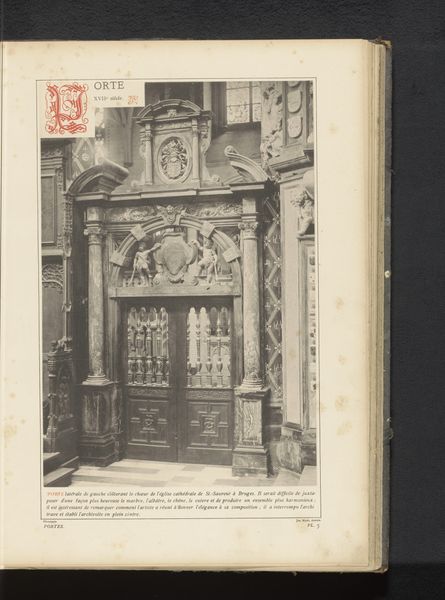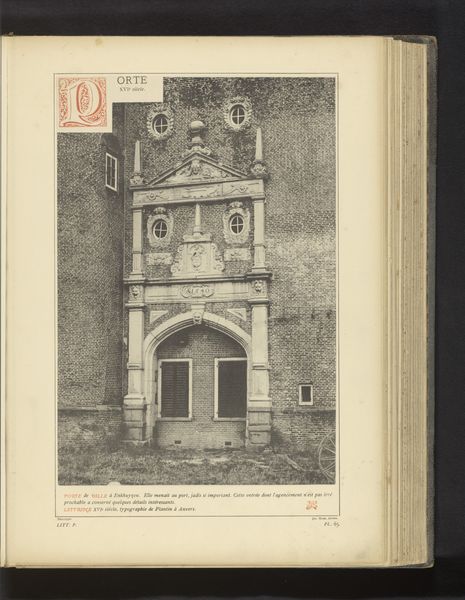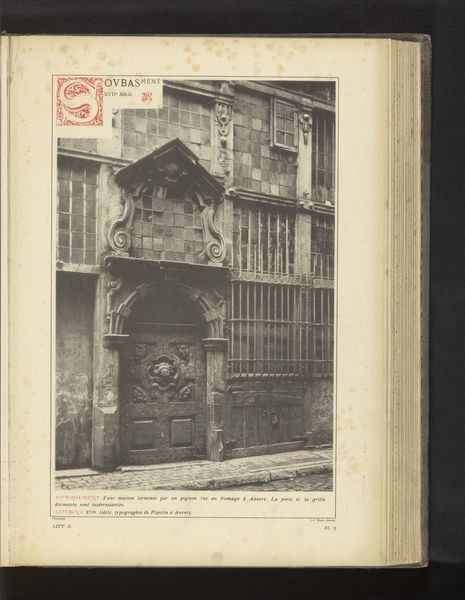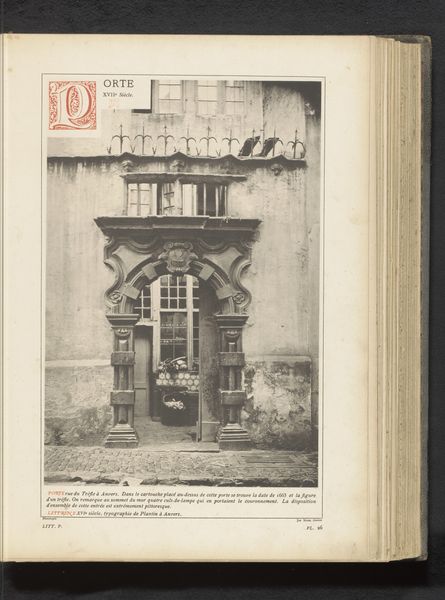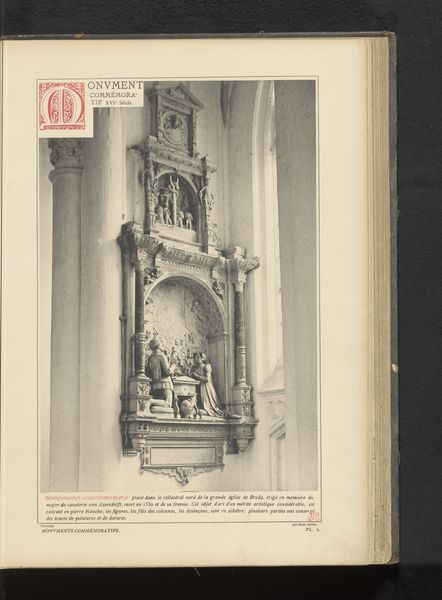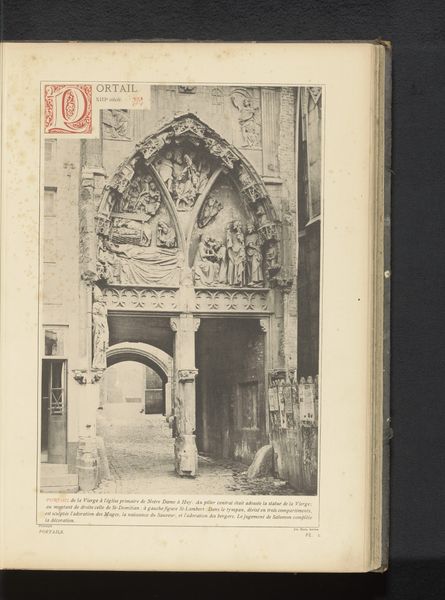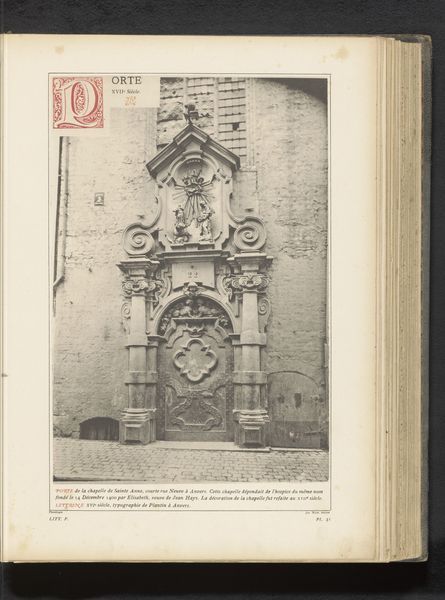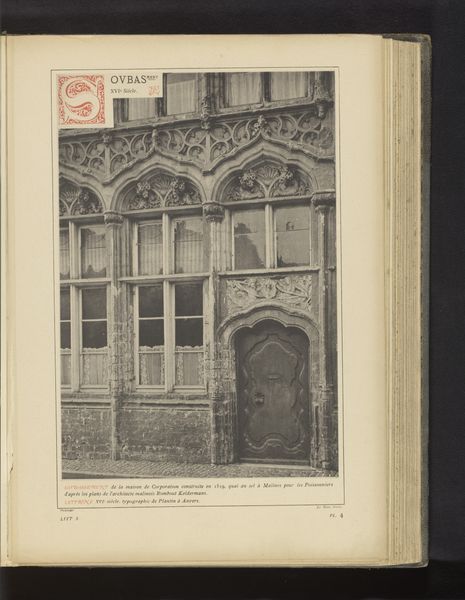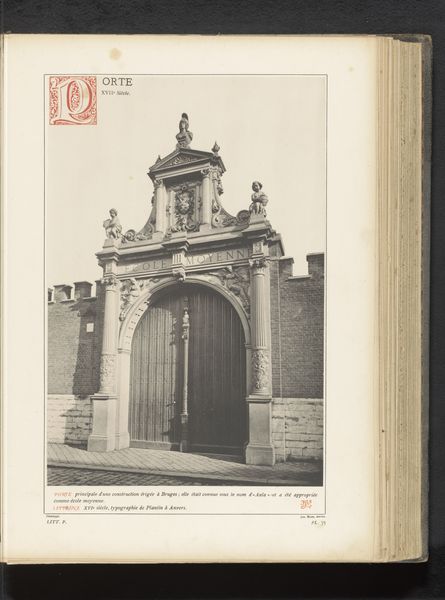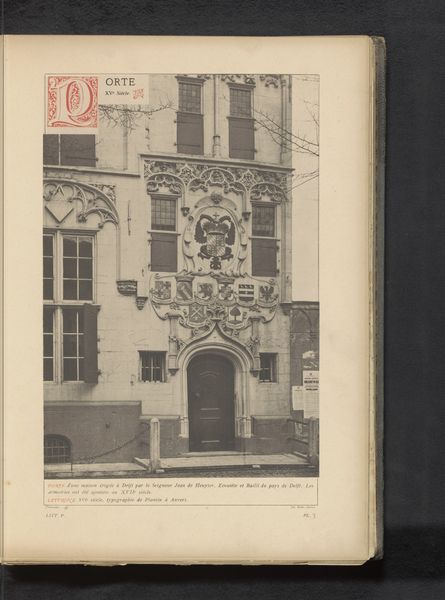
print, photography, architecture
# print
#
photography
#
ancient-mediterranean
#
cityscape
#
architecture
#
realism
Dimensions: height 341 mm, width 228 mm
Copyright: Rijks Museum: Open Domain
Curator: This photographic print captures a doorway at the Bruntenhof in Utrecht. We believe it dates to before 1881. Editor: It’s a beautifully rendered image; the ornate stone doorway feels almost imposing despite its small size within the cityscape. There is such craftmanship apparent in the stonework. Curator: The Bruntenhof, you see, held historical significance as a former almshouse. These institutions played a crucial role in urban social welfare, funded often by wealthy benefactors and administered by religious organizations. Editor: It’s intriguing how the image focuses so tightly on the doorway. Almost removing the context of daily life to draw your attention to that act of labor. Was it made with locally quarried stone or imported at significant cost? Curator: Undoubtedly, decisions around the Bruntenhof’s architecture and ornamentation would be steeped in symbolism and the political implications of charity. Look at how it uses architectural grandeur to convey the city's prosperity. Editor: It strikes me how the stone contrasts with the bare facade; it suggests a very considered distinction between pure function and something that elevates labor, both the architect’s and the stonemason’s. Curator: Yes, this print probably functioned to memorialize or advertise Utrecht, presenting a curated vision of its civic identity for consumption and dissemination, far from the complexities and squalor of 19th-century urban existence. Editor: Absolutely; understanding the choice of material – the textures, the tool markings – illuminates social hierarchies just as much as historical records might. I bet it cost a pretty penny back in the day. Curator: So much to ponder indeed! Thinking about this photographic print reminds me that we see the world filtered through so many lenses, not just optical ones. Editor: And I'm left contemplating the role of craft—and photography as a craft in itself—in shaping the perception of this civic doorway, and by extension, society.
Comments
No comments
Be the first to comment and join the conversation on the ultimate creative platform.
